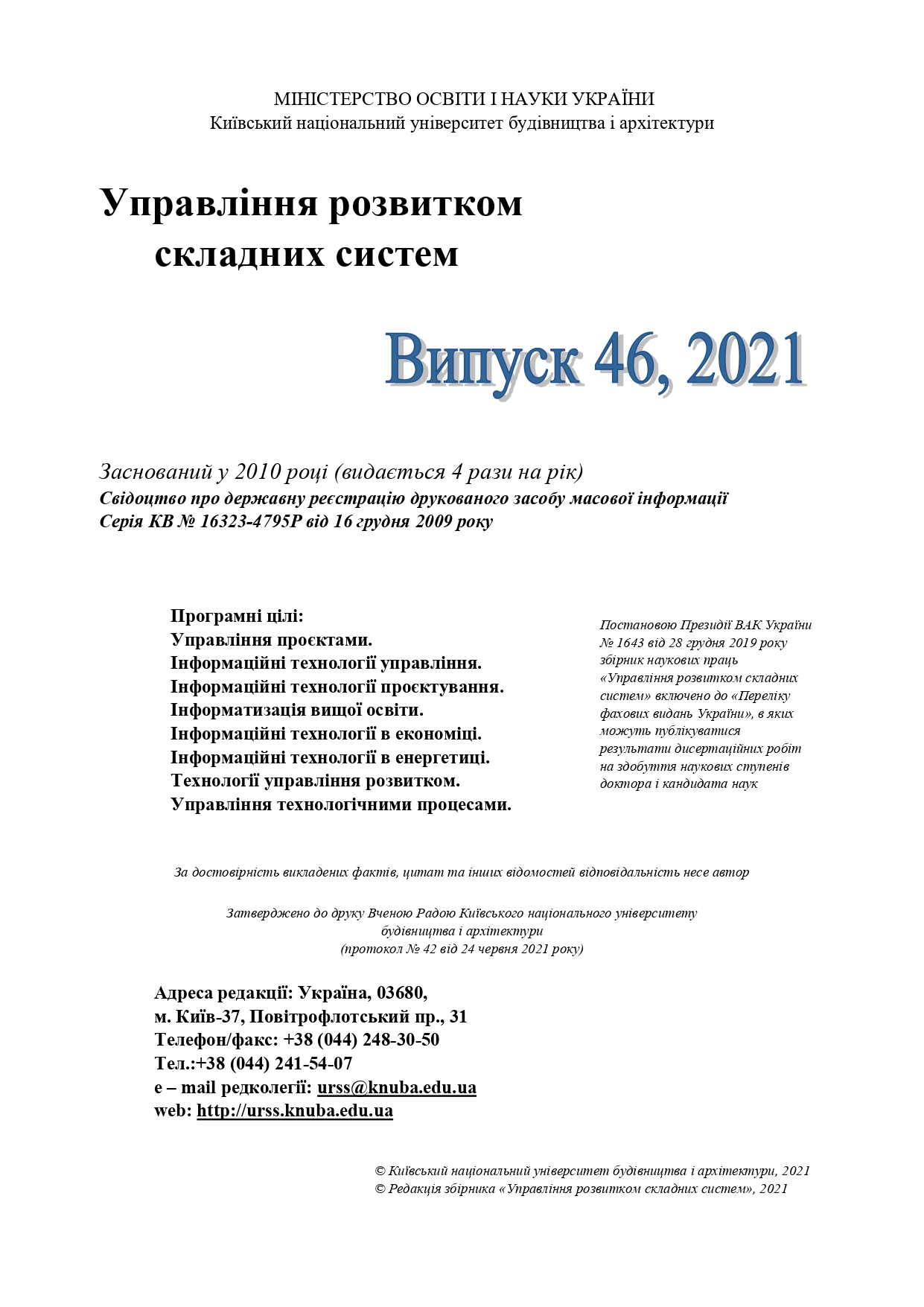SYSTEMATIC APPROACH TO WORK SAFETY MANAGEMENT IN THE WORKPLACE
DOI:
https://doi.org/10.32347/2412-9933.2021.46.149-154Ключові слова:
labor safety, human factor, risk-oriented approach, workplace, safety managementАнотація
Occupational safety management in our country no longer meets modern requirements for occupational safety in the workplace and needs to be improved, in particular through the introduction of a risk-oriented approach to the assessment of production factors. The use of risk-oriented approach system to safety management in the workplace is substantiated in this work, and it is the primary link in the management system of labor protection and its optimal (comfortable) organization significantly affects the production environment, safety and staff productivity. A structural and logical model of the incident at the workplace is proposed and possible dangerous events, the development of which in space and time can lead to its implementation are identified. Dangerous events can be caused by both - the actions of the employer and the employee, as well as external factors. All considered dangerous events are random in nature, so methods of general theory of random process control, simulation and Boolean algebra are used for their analysis. According to this model, workplace safety management involves identifying the factors that are most likely to be present in the workplace and justifying measures to reduce the frequency of their occurrence and increase the level of safety. It is shown that the use of a systemic risk-oriented approach to safety management in the workplace will allow to identify the factors that are most likely to cause accidents and to develop appropriate measures to eliminate them. In a market economy, an important point in occupational safety management at all levels is to resolve the compromise between the economic feasibility of economic activity and social responsibility of the state in a way that reduces production risk, namely - maintaining human-centric economic development. Finding such a compromise is difficult and problematic, as it is difficult to compare in commensurate units the economic performance of economic activities with social losses due to accidents and occupational diseases at work. In the conditions of decentralization, when the role of supervisory bodies over the state of labor protection is reduced, it is very important to form elements of labor protection culture in employees and managers. Improving public and cultural education on occupational safety remains a priority of our country's public policy, in particular through higher education, which trains highly qualified workers and senior managers who are personally responsible for occupational safety at each workplace.
Посилання
Morozov, А., Grechannykov, V. & Begun, V. (2015). Security management in the information society era. Visnyk of the National Academy of Sciences of Ukraine, 10, 34–41.
Yaremko, Z., Pisarevska, S. & Firman, V. (2017). Risk-oriented approach to safety management of man-made environment. Management of Development of Complex Systems, 31, 177–182.
Zdanovsky, V. (2019). Scientific principles of increasing the effectiveness and efficiency of labor protection in Ukraine. Problems of Labor Protection in Ukraine, 35, 9–14.
Tairova, T. (2019). Improving the efficiency of the "labor protection" system. Problems of Labor Protection in Ukraine, 35, 3–8.
Tairova, T. (2018). Evaluation of the effectiveness of the functioning of the legal subsystem of labor protection. Problems of Labor Protection in Ukraine, 34, 31–45.
Radionov, M. (2018). Econometric analysis of the dynamics of occupational injuries in Ukraine. Problems of Labor Protection in Ukraine, 34, 180–191.
Gulevets, V. (2017). Evaluation of the efficiency and reliability of the system of occupational health and safety management. Problems of Labor Protection in Ukraine, 33, 94–100.
Fedorenko, S. & Tyshkovets, V. (2017). Peculiarities of labor protection at the enterprise: economic aspects of development. Economy and State, 1, 56–58.
Lisyuk, M. (2018). Management of occupational safety risks at different levels. Problems of Labor Protection in Ukraine, 34, 95–105.
Khrutba, V., Zyuzyun, V., Nevedrov, S. & Lysak, R. (2019). Formation of project management methods and security programs for critical infrastructure facilities. Management of Development of Complex systems, 40, 69–75; dx.doi.org10.6084/m9.figshare.11969007
Zdanovsky, V. & Tsibulska, O. (2017). Some aspects of improving the system of labor protection in Ukraine. Problems of Labor Protection in Ukraine, 33, 3–14.
Bushuyev, S., Bushuyev, D. & Kozyr, B. (2019). Paradigm shift in the management of infrastructure projects and programs. Management of Development of Complex Systems, 37, 6–12; dx.doi.org10.6084/m9.figshare.9783149
Gaida, A. & Koshkin, V. (2015). Project classification based on noncomplete – overbandant data. Management of Development of Complex Systems, 24, 30–35.
Zachko, O. (2015). Methodological basis of safety-oriented project management of complex systems. Management of Development of Complex Systems, 23, 51–55.
Chernega, Yu., Kolesnykova, Ye. & Olekh, T. (2015). Model of competence of the manager of labor protection in the form of a responsibility matrix. Management of Development of Complex Systems, 24, 64–69.
Yaremko, Z. (2005). Life Safety. Lviv: Publishing center of Ivan Franko National University of Lviv.
Begun, V. (2020). Methodological basis of information technology of safety management based on risk-oriented approach. Doctor’s thesis. Kyiv: Institute of Mathematical Machines and Systems Problems of the National Academy of Sciences of Ukraine.
Yaremko, Z., Tymoshuk, S., Pisarevska, S. & Stelmakhovich, O. (2018). Labor protection: textbook. manual ed. by prof. Yaremko Z. Lviv: Ivan Franko Lviv National University, 430.
##submission.downloads##
Опубліковано
Як цитувати
Номер
Розділ
Ліцензія
Авторське право (c) 2021 Zinoviy Yaremko , Svitlana Tymoshuk , Viktoriya Vashchuk

Ця робота ліцензується відповідно до Creative Commons Attribution-NonCommercial-NoDerivatives 4.0 International License.

